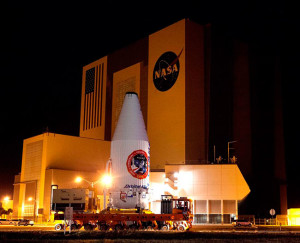NASA’s Office of Education solicits proposals for the NASA EPSCoR Research Infrastructure Development (RID) program on a periodic basis to ensure continual funding of infrastructure- building programs. The NASA EPSCoR RID program focuses on building the core strength needed to grow each state’s competitive research and technology development methods and activities.

Photo credit: NASA/Dimitrios Gerondidakis
The result of this effort will aid in the solution of scientific and technical problems of importance to NASA as defined by one or more of the four Mission Directorates and/or one or more of the ten NASA Centers (including JPL). The program also contributes to the overall research infrastructure, science and technology capabilities, higher education, and/or economic development of the EPSCoR jurisdiction. Funds are awarded to the state to sub-award via three types of solicitations within the state. The three solicitations managed under the RID program include: travel, workshop and seed grant awards.
